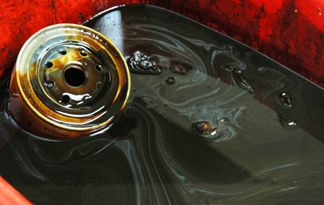Remember those orange juice commercials? The ones where people tried to poke a rolling orange with a straw? It's easy to think of the oil drilling process like that: Difficult to find the bullseye for the straw, but just a matter of sucking up the juice once it's stuck. Unfortunately, the whole thing is considerably more complicated -- and dangerous.
The process begins by drilling a hole deep into the earth. To do this, a long bit attached to a "drilling string" is used. The bit varies in diameter from five to 50 inches. After each section is drilled, a steel pipe slightly smaller than the hole diameter is dropped in and often cement is used to fill the gap.
Advertisement
This "casing" is used to give some structural integrity to the hole and to isolated high-pressure areas of rock that can explode if allowed to release.
The drilling process is, not surprisingly, unlike using a power drill on a piece of wood. The most prominent difference is that the he hole is filled with "mud" -- a mixture of fluids, solids and, chemicals -- that lubricate the bit and help move the broken rock out of the way.
As the bit moves deeper, new sections of pipe are added to the "string." These are screwed on to the topdrive at the surface in a process known as "making a connection."
Advertisement

